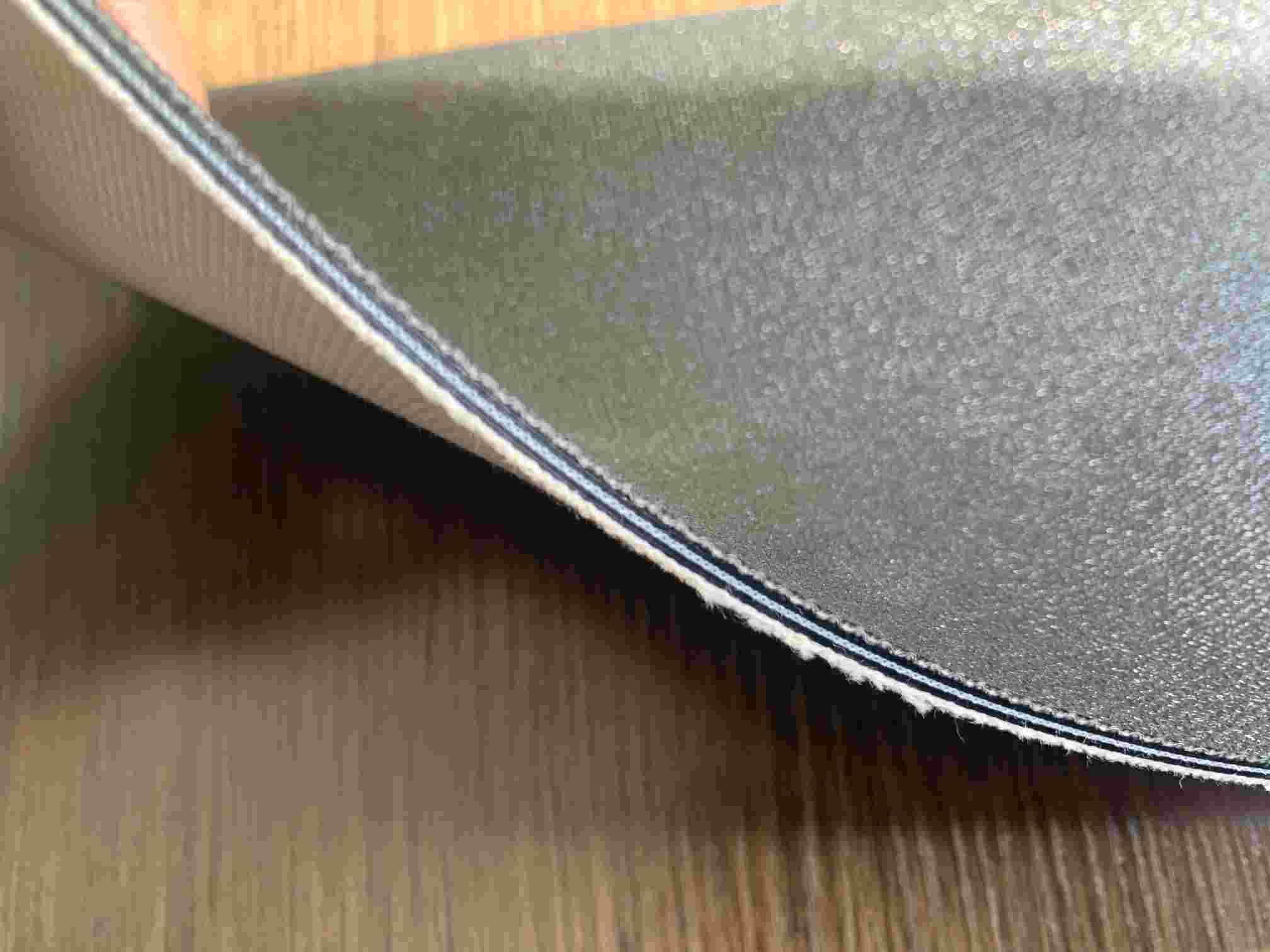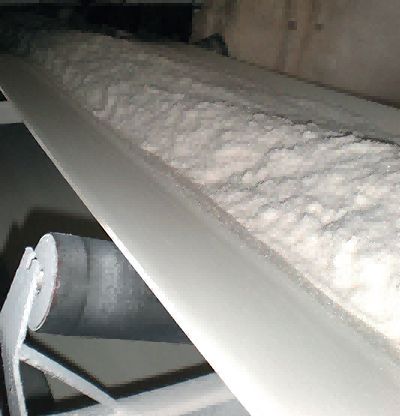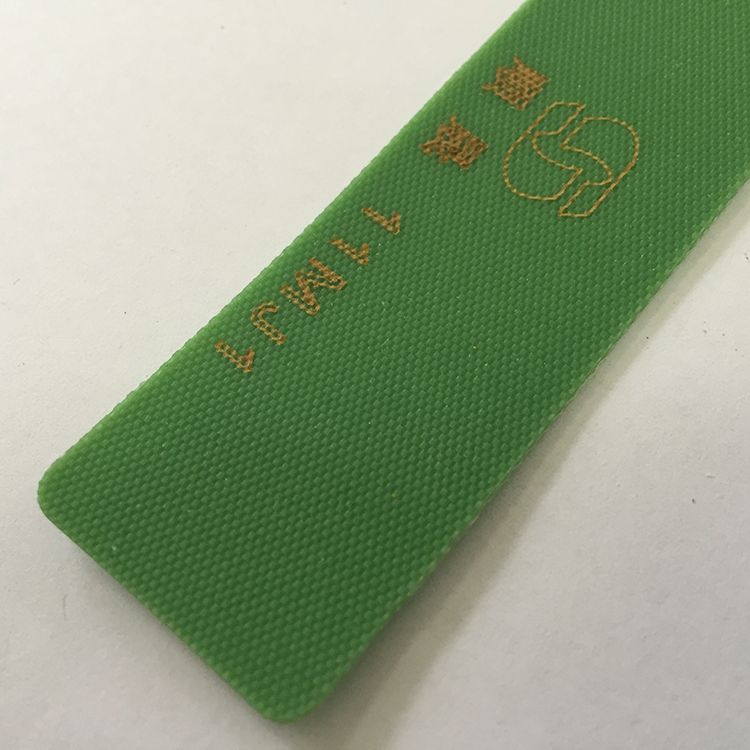Introduction
In the intricate tapestry of industrial processes, the unassuming cotton belt emerges as a linchpin in material transportation. However, not all cotton belts are created equal. Distinguishing high-quality cotton belts is paramount for industries seeking durability and top-tier performance. This article delves into the essential factors that set high-quality cotton belts apart and explores how these factors contribute to their longevity and effectiveness in diverse industrial applications.

Material Characteristics
The journey towards a high-quality cotton belt begins with the raw material – cotton. The quality of the cotton used in belt production plays a pivotal role. Premium cotton, characterized by its strength and resilience, forms the foundation for belts that withstand the rigors of industrial use. Weaving techniques and thread count further contribute to the material’s durability, ensuring that the fabric stands up to the demands of heavy-duty applications.
Thickness and Composition
Optimal thickness is a key factor in the durability and load-bearing capacity of a cotton belt. High-quality belts strike a balance, offering the necessary thickness without compromising flexibility. The composition of the belt, including any reinforced layers, adds an extra layer of resilience. Together, thickness and composition empower the cotton belt to navigate the challenges posed by various industrial settings.
Surface Texture and Grip
Surface texture is not merely a design feature but a crucial element that influences a cotton belt’s effectiveness. High-quality cotton belts are engineered with surface textures that ensure effective material grip without causing excessive friction. This feature is instrumental in preventing slippage and optimizing the efficiency of material transfer across conveyor systems.
Joint and Splice Construction
Seamless joint construction is a hallmark of high-quality cotton belts. Smooth belt operation relies on effective splicing methods that minimize the risk of failures. Whether through mechanical fasteners or vulcanization, the joint and splice construction of a high-quality cotton belt is meticulously designed to enhance overall durability and reliability.
Resistance to Wear and Abrasion
Industries subject their conveyor belts to wear and tear daily. High-quality cotton belts stand out with their resistance to wear and abrasion. Special coatings or treatments contribute to their ability to withstand the harsh conditions of industrial environments. This resistance not only prolongs the life of the belt but also reduces the frequency of replacements, minimizing downtime.
Temperature Resistance
The ability of a cotton belt to withstand varying temperatures is a crucial factor in its performance. High-quality belts exhibit temperature resistance, ensuring consistent functionality across a spectrum of environments. Whether facing extreme heat or cold, these belts maintain their structural integrity, contributing to their reliability in diverse industrial settings.
Load-Bearing Capacity
The relationship between material strength and load-bearing capacity is a defining feature of high-quality cotton belts. Engineered to handle heavy loads, these belts find applications in a range of industries with varying material weights. The load-bearing capacity of the belt influences its versatility, allowing it to adapt to the demands of different industrial processes.
Flexibility and Adaptability
Flexibility is a sought-after trait in any conveyor system component. High-quality cotton belts are designed to be flexible, adapting to the contours of different conveyor systems seamlessly. This adaptability not only prevents belt damage but also enhances overall performance, making these belts indispensable in a variety of industrial applications.
Compliance with Industry Standards
The assurance of quality and safety comes with adherence to industry standards. High-quality cotton belts meet or exceed recognized standards, ensuring their reliability. Certifications from reputable bodies validate the quality and safety of these belts, providing customers with the confidence that they are investing in a product that has undergone rigorous testing and meets industry benchmarks.
Manufacturing Processes
The journey from raw cotton to a high-quality cotton belt involves advanced manufacturing techniques. Quality control measures are implemented at various stages to ensure consistency and reliability. Advanced technology and automation play crucial roles, enhancing efficiency, reducing the likelihood of errors, and ensuring that each belt that rolls off the production line meets the stringent criteria of a high-quality product.
Case Studies and Success Stories
Real-world examples provide tangible evidence of the impact of high-quality cotton belts. Industries that prioritize quality report quantifiable improvements in durability and performance. Case studies and testimonials highlight the positive outcomes of integrating these belts into industrial processes, showcasing their effectiveness in diverse settings.
Supplier Selection Criteria
Choosing the right supplier is a pivotal step in acquiring high-quality cotton belts. Researching suppliers with a proven track record for producing reliable belts is essential. Evaluating the supplier’s adherence to industry standards, track record, and customer reviews provides valuable insights. Consideration of supplier support, warranty options, and after-sales services ensures a comprehensive approach to customer satisfaction.
Conclusion
In conclusion, the world of industrial material transportation is a demanding one, and the cotton belt stands at its forefront. Distinguishing high-quality cotton belts involves understanding the intricate factors that contribute to their durability and performance. From material characteristics to manufacturing processes, each aspect plays a role in creating a conveyor belt that not only meets industry standards but exceeds them. As industries seek efficiency and reliability in their operations, the journey towards high-quality cotton belts becomes a strategic investment, paving the way for seamless, efficient, and resilient industrial processes.





